An Analysis of a Broken Bat Home Run
On March 30, 2015, Red Sox slugger Mike Napoli hit a dinger over the Green Monster at Fenway South in a Grapefruit League game versus the Twins. You can see the homer here. While the event was certainly unusual, was it a remarkable show of strength by Napoli? Conventional wisdom says that he had to work harder than normal to get such a well-hit ball, given that the bat broke. As Red Sox color announcer Jerry Remy said, "That will give you an idea of how strong Napoli is." So, is conventional wisdom correct? Was Napoli impeded by the broken bat, thereby requiring an extra effort to "muscle the ball" while it was in contact with the bat? The answer to both questions is a resounding NO. Here's why.
The story is related to another issue that I have commented on many times. Namely, for a typical impact of the ball on the barrel end of the bat, the batter's grip on the bat while the ball and bat are in contact plays no role in the ultimate fate of the ball. You can read all about that discussion elsewhere on this site. The main points of the earlier discussion can be summarized as follows:
- A bat is not a rigid object.
- When bat meets ball, the bat initially recoils only locally at the spot of impact
- A bending wave then propagates along the length of the bat toward the knob, reflects from the knob end (and whatever is holding it), then travels back to the impact point.
- By the time the reflected wave reaches the impact point, the ball has already left the bat
- Therefore, nothing on the knob end of the bat--the knob, the grip, etc.--could possibly influence what happens to the ball.
The most dramatic manifestation of this phenomenon was the no-hands home run hit by Todd Frazier in May, 2012.
To do a proper analysis of the ball-bat collision for the Napoli home run requires having high-speed video, which unfortunately is not available to me. So I have to rely on other high-speed video of similar broken bats. The example I will use is the broken bat of Miguel Cabrera from the 2012 World Series, an event that I analyzed at the time. My previous analysis was about the vibrations of the top part of the bat after it separated from the handle. Now I want to do a careful analysis of the contact itself. As Yogi once said, "You can observe a lot by watching." So...watch!
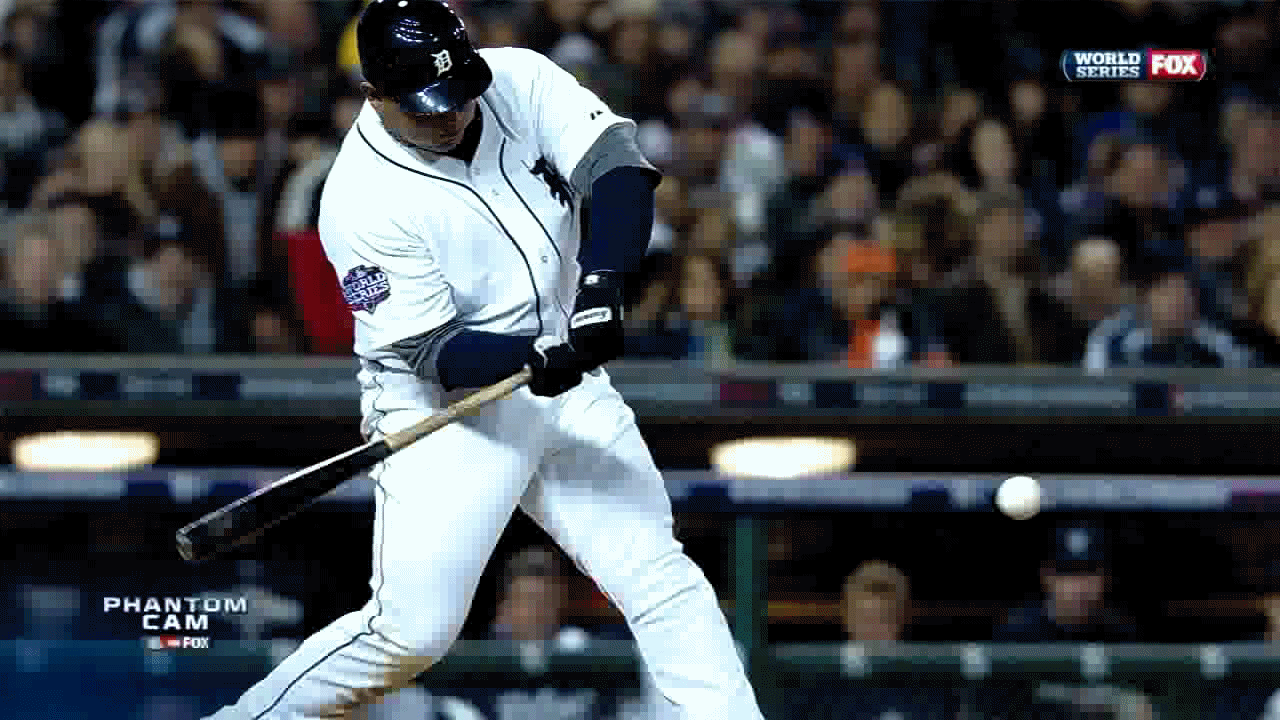
Below is the sequence of images of the Cabrera broken bat, separated in time by an amount I estimate to be 0.6 ms, based on my earlier analysis. The sequence runs from top to bottom, with the caption above each frame telling you what is observed in the image.
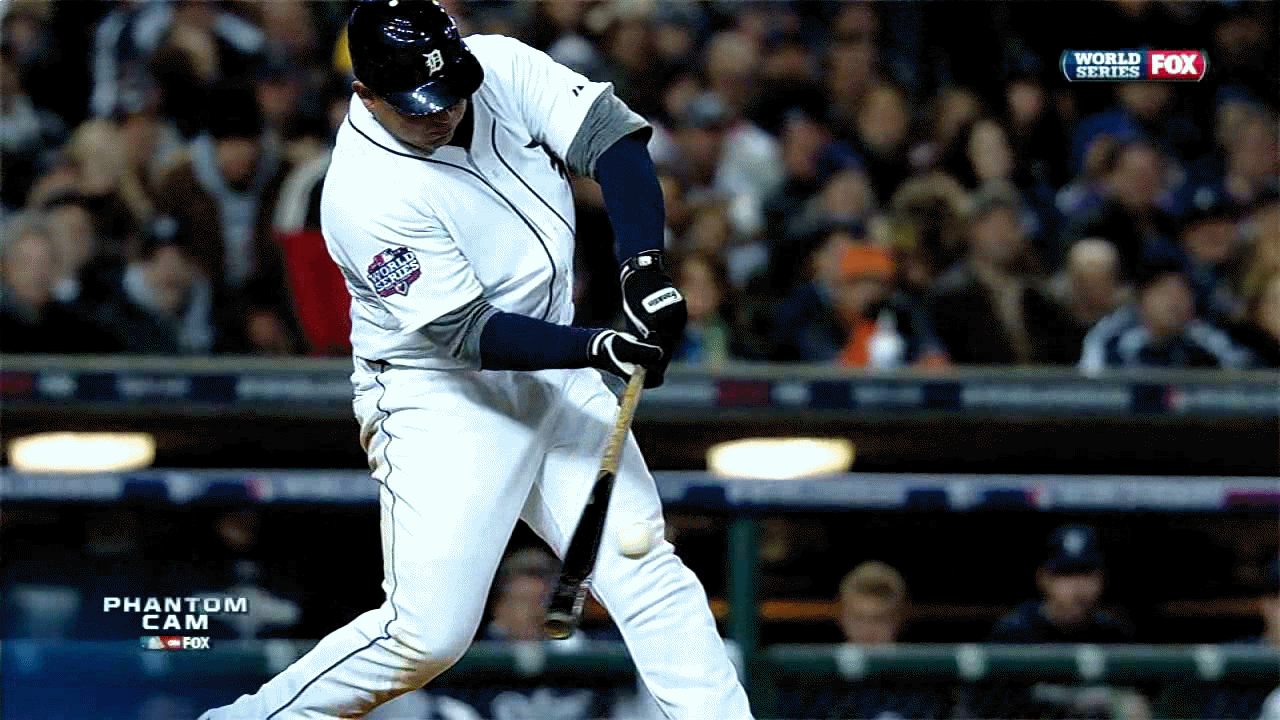
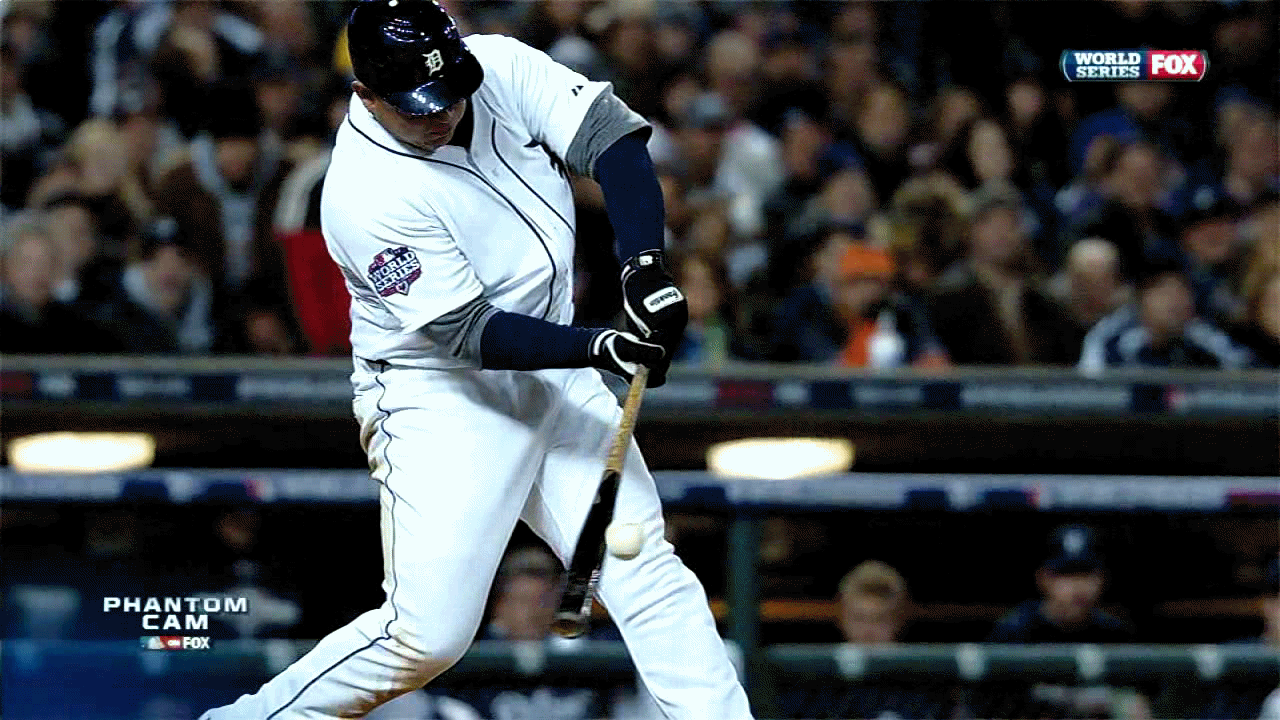
The bat is starting to bend.

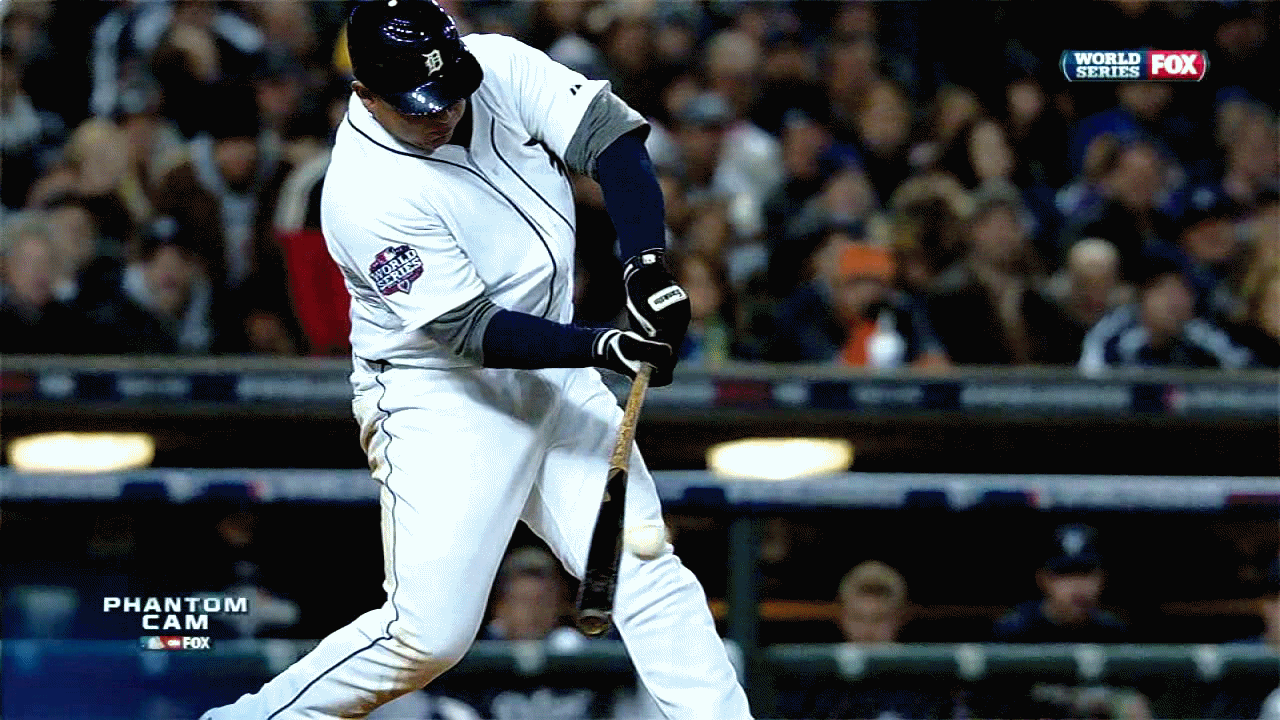
The bat is still intact.
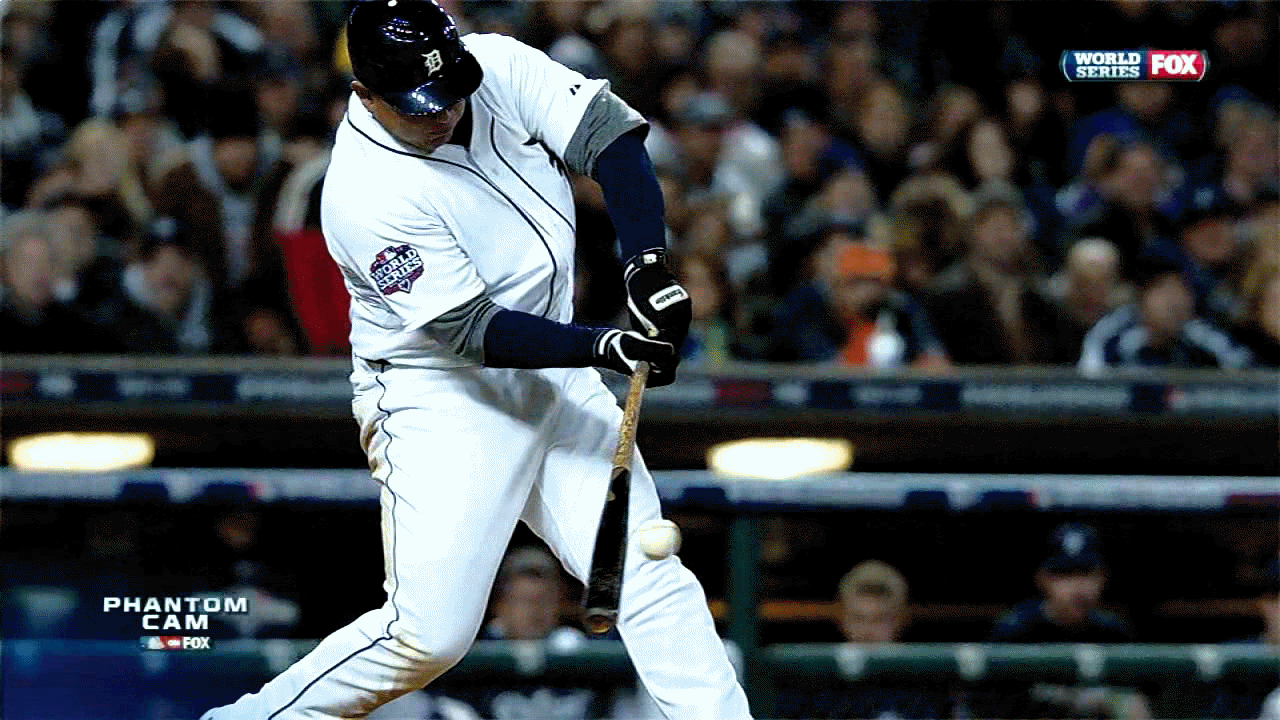

So what do these images tell us? First, the ball-bat contact time is at most two frames, or 1.2 ms. Based on what we know about the ball-bat collision, it is likely closer to 1 ms, but it is not possible to see that without higher-speed video. Second, the transverse wave takes time to propagate down the bat, reaching the knob 4 frames after initial contact. The crack takes even longer to develop, as it first appears 5 frames after initial contact and 2 frames after the ball has already left the bat. From these images, I conclude that the cracking occurred
So that is what I see in the video. And it is completely in accord with my understanding of the physics. The ball-bat contact time is short compared to the time it takes for the bending wave in the bat to develop and eventually fracture the bat. Assuming the Napoli situation is not substantially different from the Cabrera one, I conclude that by the time the bat has cracked, the ball is already on its merry way to the Green Monster. Napoli certainly displayed a remarkable show of strength, but not for the reason that Remy was insinutating. He hit the ball a long way not because of some extra muscle he applied to the bat while it was in contact with the ball but because of the high bat speed his muscles generated before the contact with the ball even occurred.
Let me conclude this article with an anecdote. A number of years ago, I was working with my friends at the Sport Sciences Laboratory at Washington State University, doing various testing of bats. At that facility, baseballs are fired at high speed from an air cannon onto a bat that is initially at rest. The bat is mounted horizontally, with the handle clamped at the handle onto a device that allows the bat to freely pivot when struck by the baseball. Both the initial and rebound speed of the ball are measured accurately. In our particular test, we had fired baseballs onto the sweet spot on the barrel of the same bat about a dozen times at 120 mph, always getting the same rebound speed. Finally, the bat broke cleanly, right at the place it was clamped. And guess what: That last rebound speed was no different than all the others. The breaking of the bat at the handle had no influence at all on the fate of the ball.



